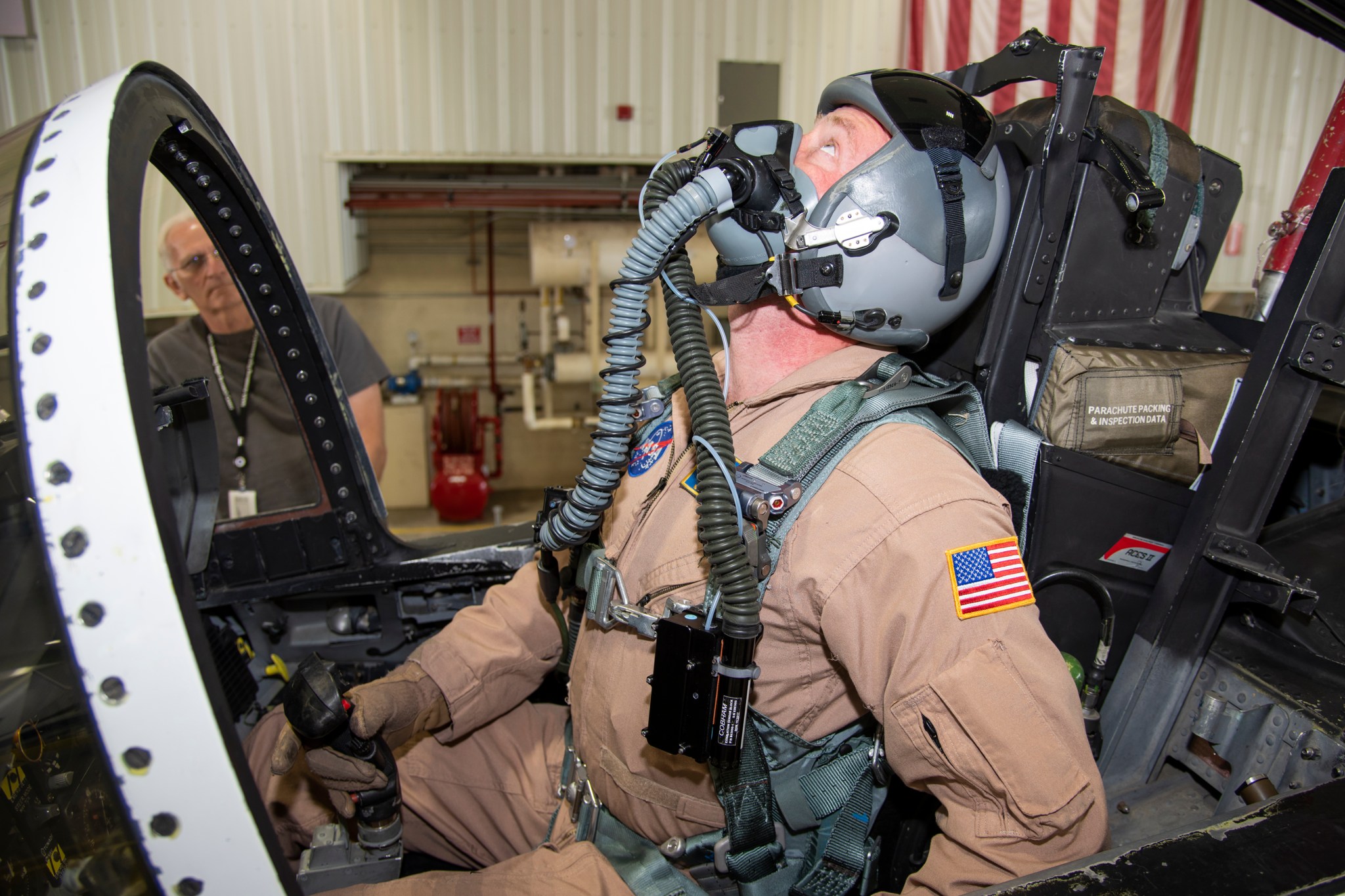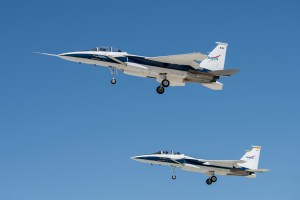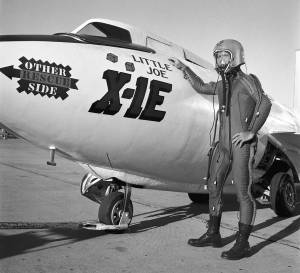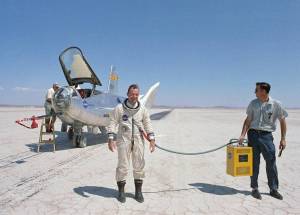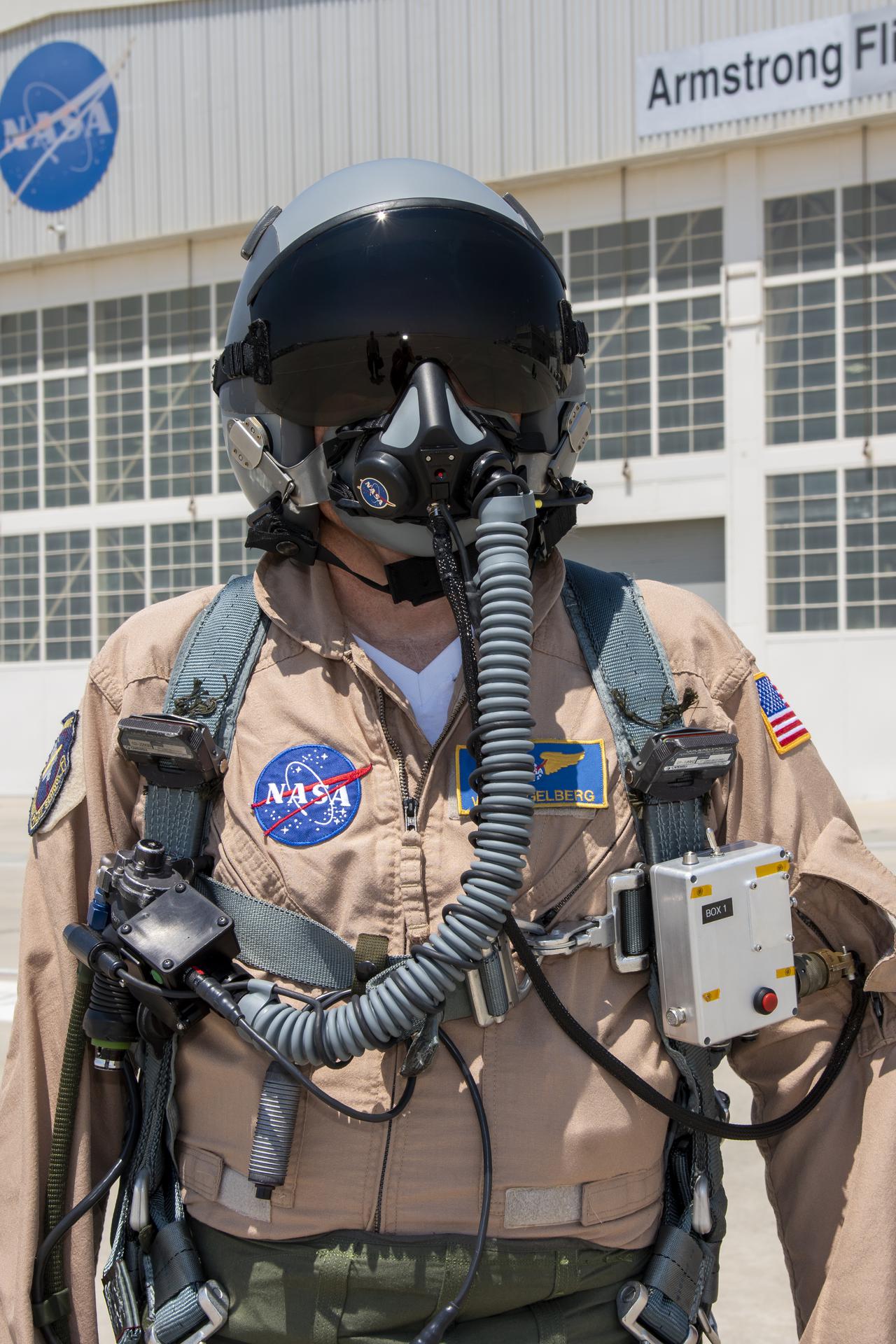The Life Support Office at NASA’s Armstrong Flight Research Center in Edwards, California, is responsible for the development, testing, and maintenance of life support systems and performs inspections, maintenance, and services for aircraft flight equipment. These systems include maintaining ejection seats, aircraft oxygen systems, pressure suits, flight equipment, and pyrotechnics. The office staff also performs aircrew training in the use of life support and emergency escape systems.
Ejection Seat Maintenance
Life Support’s primary focus is the maintenance of the four types of ejection seats used in NASA Armstrong aircraft. The ejection seats are specific to the aircraft the center operates, including the F-15D, the F-18, the ER-2 (the NASA version of the U-2), and soon for the X-59 Quesst demonstrator. Maintaining the ejection seats requires periodic inspection, forecasting the use of ballistic devices, changing ballistics and ordering, and storing of ballistics. Also required are performing unscheduled maintenance (removal of all, or part, of the seat to allow other shops to perform maintenance) and functional testing of critical components of the seats to ensure that they will work when required.
Major ejection seat subsystems include parachutes and survival kits. The parachutes are mounted directly to the ejection seat and are removed at specified periods for repack inspection, or to replace any items due for replacement, such as risers, explosive devices, or the canopies.
Aircraft Oxygen Systems Maintenance
The life support team also maintains the oxygen systems for all of the center’s aircraft. As part of that work, the system was upgraded on the Airborne Science DC-8 and installed a panel mounted regulator on the F-18 jets. Life support personnel are also responsible for continuing to service and maintain systems on the F-15s, G-IIIs, King Air, and the T-34. Personnel are also collaborating with Lockheed Martin in the development of the X-59 oxygen system.
Flight Equipment Maintenance
The number one responsibility of life support is aircrew safety, including maintenance of all the equipment required for carrying out a mission including:
- Flight suit (flame retardant)
- Undergarments (flame retardant)
- Gloves (flame retardant)
- Helmet and oxygen mask
- Parachute/torso harness
- Boots
- Anti-g garments (g-suits)
- Life preservers
- Anti-exposure suits
- Full pressure suits
Periodic inspections, functional tests, cleaning and replacement of damaged or expired parts are how the life support team ensures the suits are safe and ready for use.
Pressure Suit Maintenance
At 43,000 feet altitude, pilots experience temperatures of about minus 66 degrees Fahrenheit. However, at 63,000 feet, the atmospheric pressure is so low that fluids in the pilot’s body, such as blood, would boil without a protective suit and equipment. In these conditions, lungs also cannot absorb enough oxygen for the individual to remain conscious requiring the use of a pressure suit. Pressure suits form a protective layer around the pilot, inflating when necessary to maintain reasonable atmospheric pressure on the human body.
NASA’s use of pressure suits became critical when the National Advisory Committee for Aeronautics, NASA’s predecessor, began flying early experimental planes, or X-planes, at above 50,000 feet altitude. The life support team conducts research to effectively design pressure suits and ensures that they are being maintained during use.
To learn more about the pressure suits, visit Celebrating 50 Years of Spacesuits, Featuring the Early Pressure Suits, and NASA Armstrong Suits Up for the 50th Apollo Anniversary.
Explosives Maintenance
The Life Support team is responsible for the removal and replacement of pyrotechnics onboard aircraft. Pyrotechnics are used to launch ejection seats and release items like a fuel tank from the pylon in case of an emergency.
Aircrew Training
Life support conducts a variety of training sessions for the aircrew that includes care and use of all life support equipment, land and water survival training, an introduction to the ejection systems, ejection seat capabilities, limitations, and ejection/bailout procedures. The aircrew also receives physiological training to learn how to detect and prepare for any physiological episodes, such as lightheadedness, fatigue or numbness.
Survival Training
Survival kits are an integral part of the ejection seats and are extremely important to the aircrew member during post ejection while waiting for rescue. They contain a survival radio, a locator beacon, raft (in certain kits), food, water, a first aid kit, fishing gear, signaling mirror/flares, compass, shelter and manuals on how to survive in different climates or terrain. They also provide emergency oxygen to the aircrew member in flight in case of an aircraft oxygen system failure and during parachute descent after ejection. Because maintaining these kits is critical to a person’s survival, they are inspected/repacked and tested at specified periods to ensure that all components meet or exceed existing guidelines.
Life support also provides training to all crew members (pilots, video/photo support, flight engineers, and guest passengers) on the proper steps for seat/person integration, emergency ground egress, pre-ejection procedures, parachute landing procedures, water survival and proper use of survival gear in the survival kits. Portions of this training are usually repeated annually for pilots and every 30 days for back-seat crew members until a satisfactory level of proficiency is achieved.



























